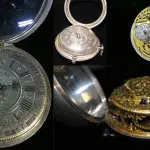
‘It’s just been such an honour:’ Hawaii Mars revving engines over mid-Island for final time
NANAIMO — It’s the final opportunity to see one of B.C.’s most iconic planes fly in the sky.
The legendary Hawaii Mars water bomber will make its final flight from Port Alberni to Patricia Bay in North Saanich on Sunday, Aug. 11.
Wayne Coulson, owner of the aircraft, said they plan to leave Port Alberni’s Sproat Lake just after lunch, then fly past Campbell River, Powell River, the Comox Valley and down the east coast of Vancouver Island.
“It’s just been such an honour to own that airplane. It’s brought so much good not only to the community but certainly to our company as we look at transitioning away from that particular airplane. It’s served us well.”


